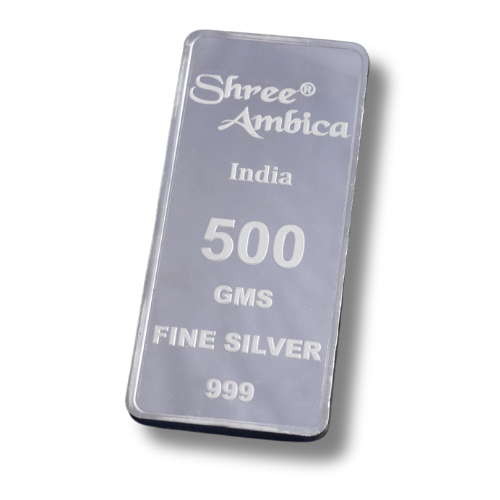
The Benefits and Risks of Leveraged Bullion Investments
April 25, 2025
Digital Gold vs. Physical Gold: Which is Right for You in 2025?
May 23, 2025The Impact of Currency Fluctuations on Bullion Prices

Introduction
In today's interconnected financial world, precious metals investors must understand how currency movements affect their bullion investments. This complete guide explores the relationship between foreign exchange markets and gold and silver prices, offering practical insights for investors and jewellers on both sides.
How Do Currency Values Affect Precious Metals Prices?
Have you ever noticed why gold prices sometimes move in the opposite direction of your local currency? This relationship is no accident—it's economics in action.
Currency fluctuations directly impact bullion prices because precious metals are typically priced in US dollars on global markets. When a currency loses value against the dollar, gold and silver generally become more expensive in that local currency.
For Indian investors and jewellers, the rupee-dollar exchange rate plays a crucial role in determining domestic bullion prices. Even when global gold prices remain stable, fluctuations in the INR/USD exchange rate can cause major price movements in the Indian market.
This currency-bullion relationship creates both challenges and opportunities for everyone from casual investors to professional jewellers.
Why Is the US Dollar So Important for Gold Prices?
The US dollar holds a special place in the precious metals market for various historical and practical reasons.
Gold and other precious metals are priced internationally in US dollars, creating an automatic inverse relationship. When the dollar strengthens, gold typically becomes cheaper in dollar terms—and vice versa when the dollar weakens.
This happens because:
- A stronger dollar makes gold more expensive for holders of other currencies
- This reduced global purchasing power often leads to lower demand
- Lower demand typically results in price corrections
The chart below explains this inverse relationship between USD strength and gold prices:
| USD Index Movement | Typical Gold Price Reaction |
|---|---|
| ↑ 5% | ↓ 2–4% |
| ↓ 5% | ↑ 3–6% |
| Significant spike | Sharp decline |
| Major collapse | Substantial rally |
Understanding this relationship helps investors predict price movements and plan their bullion purchases more strategically.
How Does the Indian Rupee Influence Domestic Gold Rates?
"What happens to gold prices in India when the rupee falls against the dollar?"
For Indian consumers and investors, the rupee's performance against the dollar strongly impacts domestic gold prices, sometimes even more than changes in international rates.
When the rupee weakens:
- Imported gold becomes more expensive
- Domestic prices rise even if international prices remain stable
- Profit margins for jewellers may compress
- Consumer demand often dips temporarily
Equally, a strengthening rupee can make gold more affordable for Indian buyers, potentially raising demand even when international prices haven't changed.
At Shree Ambica Touch, we closely monitor these currency movements to provide our 20,000+ jeweller clients with timely insights through our AUAG app, helping them make informed trading decisions.
The Safe-Haven Effect: Why Currencies and Gold Move Together During Crises
During times of economic uncertainty, both currency and precious metal markets experience distinctive patterns of behavior.
Gold has historically served as a "safe haven" asset during economic uncertainty. When investors lose confidence in currencies or stock markets, they often convert their assets to gold, driving up its price regardless of currency movements.
This safe-haven effect typically appears in:
- Rapid price appreciation during market panics
- Reduced interactions with normal currency relationships
- Higher trading volumes and premiums for physical bullion
- Increased demand for smaller denomination bars and coins
Recent examples include the 2008 financial crisis, the 2020 COVID-19 pandemic, and geopolitical tensions—all periods when gold prices increased as investors sought stability.
For businesses like Shree Ambica Touch, these periods often see increased demand for our assaying services as investors verify the authenticity of their precious metal purchases.
Your Bullion. Our Expertise. One Smart Strategy.
Central Bank Policies and Their Impact on Bullion Prices
"How do interest rate changes affect gold and silver investments?"
Central bank decisions, particularly by the US Federal Reserve, create significant effects across currency and precious metals markets.
Interest rate increases typically:
- Strengthen the associated currency
- Increase the opportunity cost of holding long-term assets like gold
- Lead to downward pressure on bullion prices in the short term
Rate cuts generally have the opposite effect, weakening currencies and boosting gold prices.
Additionally, central bank gold purchases have increased greatly in recent years. When central banks buy gold to build up reserves, they reduce their dependency on the US dollar and other reserve currencies, creating additional demand for bullion.
This chart shows how different monetary policies typically affect gold prices:
| Central Bank Action | Currency Effect | Gold Price Response |
|---|---|---|
| Rate increase | Currency strengthens | Gold often declines |
| Rate cut | Currency weakens | Gold typically rises |
| Quantitative easing | Currency typically weakens | Gold usually strengthens |
| Hawkish statements | Currency appreciates | Gold may weaken |
| Dovish rhetoric | Currency depreciates | Gold tends to rise |
How Inflation and Currency Changes Lead Bullion Prices
Inflation and currency devaluation have historically been among the strongest drivers of precious metal appreciation.
When a currency loses purchasing power through inflation, precious metals often retain their value better in real terms. The best investors understand this relationship and increase their bullion holdings during periods of high inflation or currency instability.
In India, gold has traditionally served as an inflation hedge and store of value. During periods when the rupee has faced market pressure, domestic gold demand has typically increased.
For many investors, the question isn't "if" they should own precious metals during currency devaluation, but "how much" they should allocate to this asset class.
At Shree Ambica Touch, our NABL-certified assaying services provide investors with confidence in their bullion purchases, guaranteeing they receive precisely what they're paying for during these crucial investment periods.
Currency Volatility vs. Gold Volatility: Which Offers More Stability?
When comparing the stability of currencies to precious metals, historical data tells an interesting story.
While daily price movements in gold and silver markets can be dramatic, over longer time horizons, precious metals have often preserved purchasing power better than many liquid currencies.
Consider these comparative volatility metrics:
- Average daily volatility of major currencies: 0.5-1%
- Average daily volatility of gold: 1-1.5%
- Gold's purchasing power over 50 years: Relatively preserved
- Many currencies' purchasing power over 50 years: significantly reduced
This long-term perspective explains why investors often increase their bullion holdings during periods of currency uncertainty.
Shree Ambica Touch's customized gold and silver bar minting services (from 0.05g to 1kg for gold and 5g to 500g for silver) allow investors to precisely compare their precious metals holdings to their desired portfolio allocation.
Regional Currency Factors Affecting the Indian Bullion Market
"What makes gold prices in India different from international rates?"
Beyond the rupee-dollar exchange rate, several regional factors influence bullion prices in the Indian market:
- Import Duties and Taxes: Changes in gold import duties directly impact domestic prices, sometimes creating high premiums over international rates.
- Seasonal Demand: Wedding seasons and festivals create cyclical demand patterns that can temporarily override currency effects.
- Agricultural Income: Good monsoons and harvests increase rural purchasing power, boosting gold demand regardless of currency movements.
- Regional Economic Policies: Government initiatives like Gold Monetization Schemes and national gold bonds influence market dynamics.
These regional factors often explain why Indian gold prices don't perfectly mirror international rates adjusted for currency.
With over five decades of experience, Shree Ambica Touch has navigated these regional dynamics successfully, helping our clients understand the unique factors affecting the Indian precious metals market.
Practical Strategies for Investors During Currency Volatility
For bullion investors and jewellers worried about currency fluctuations, various practical strategies can help navigate market uncertainty:
- Dollar-Cost Averaging: Instead of trying to time the market, make regular bullion purchases to average out price fluctuations.
- Maintain Different Holdings: Own both gold and silver, as they sometimes respond differently to currency movements.
- Monitor Currency Trends: Use tools like the AUAG app to stay informed about currency movements affecting bullion prices.
- Focus on Physical Quality: During volatility, verify you're acquiring properly assayed, high-purity bullion from reputable sources like Shree Ambica Touch.
- Consider Premium Fluctuations: Watch for changes in the premium over spot prices, as these often increase during periods of currency volatility.
Remember that physical bullion purchases are typically long-term holdings, so short-term currency fluctuations should not conflict with the strategic role of precious metals in preserving wealth.
How Technology Is Changing Currency-Bullion Relationships
Digital platforms and technologies are transforming how currency movements impact bullion markets in the following key ways:
- Real-time Price Tracking: Apps like AUAG provide instant updates on currency movements and bullion prices, enabling faster responses to market changes.
- Reduced Trading Stress: Digital platforms make it easier to adjust positions in response to currency movements.
- Improved Transparency: Technology has improved price discovery and reduced regional premiums.
- Enhanced Security: Digital verification methods help guarantee bullion authenticity during volatile markets when theft risks increase.
As a technologically advanced refinery, Shree Ambica Touch supports these innovations through our AUAG app and digital trading platform, helping jewellers respond quickly to currency-driven price changes.
Conclusion: Building a Currency-Aware Bullion Strategy
Understanding the relationship between currency fluctuations and bullion prices is important for any serious precious metals investor or jeweller.
While short-term price movements can be unpredictable, the fundamental relationship between currencies and precious metals provides a framework for strategic decision-making.
For over five decades, Shree Ambica Touch has helped clients navigate these complex market dynamics. Our complete services—from 999 purity refining to customized minting and NABL-certified assaying—provide the foundation for informed bullion investment during all currency conditions.
Whether you're a seasoned bullion trader or just beginning to explore precious metals investment, understanding currency impacts will help you make more informed decisions in this exciting and historically significant asset class. Contact us today to discuss your bullion investment strategy.










